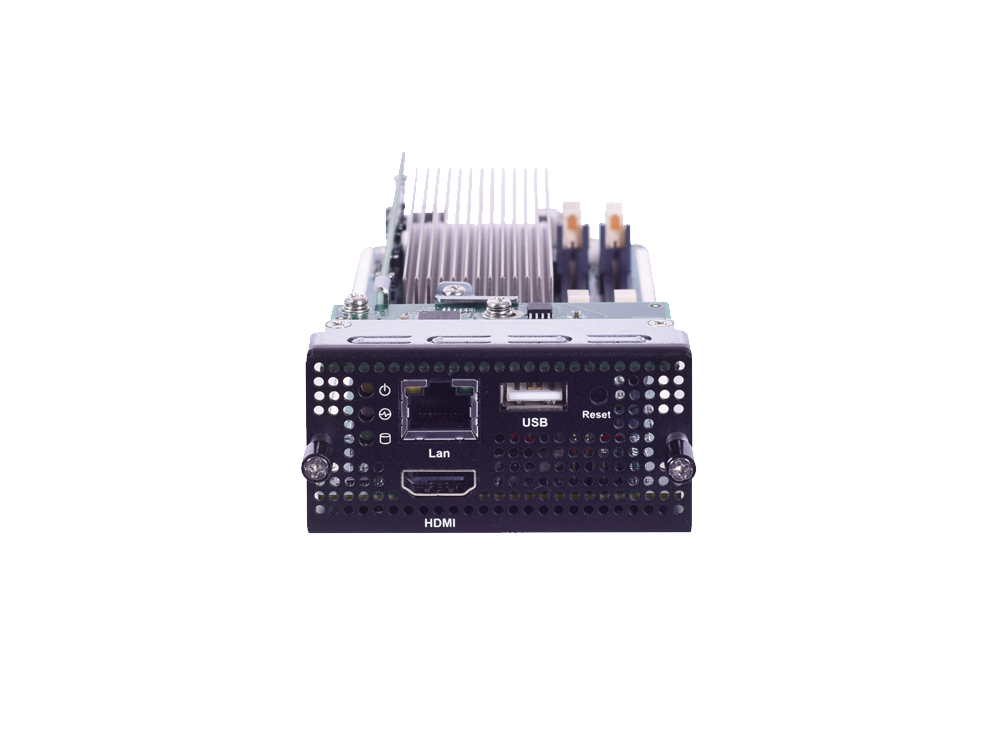Background
The demand for higher-level security has been the driving force for the populated installations of surveillance cameras in mission-critical environments, such as airports, banks, public transits, and state-owned institutions, and IP cameras are the preferred choice over conventional CCTV types due to ease of deployments. However, when there are saturated amount of IP cameras, there are perhaps billions of video data captured by these surveillance devices on a daily basis. This will definitely cause latency for video analytics, when IP cameras transfer the captured videos through Internet protocols.
Therefore, low latency is the ultimate goal for the backend server of the IP cameras. In order to establish real-time analytics of the video contents, the backend server shall be empowered by a powerful hardware capable of handling traffic flow over network protocols and performing encoding, streaming and compression at optimal quality even when bandwidths are constrained.
As for evidence collection, all the captured video data shall be retainable by the backend hardware for an extended period time for later analytics and reference.
Requirements
A system integrator in Asia-Pacific came to Lanner with several technological requirements for the hardware solution to be deployed at the backend data center. The solution must be able to compress video data as reduced as possible, so that HD video contents can be transferred through limited bandwidth. This allows high quality video to be transmitted over 3G, 4G/LTE public and private networks. Meanwhile, with reduced video size, the data can be retained as backup for extended periods, within the same storage capacity.
High-performance computing processor
Being deployed at the data center for IP cameras is both video and graphic intensive. Thus, a high-performance processor is highly required to perform encoding, streaming and compression of digital contents and videos. In fact, today’s compression require optimal outputs, which means the minimal storage needed with the highest possible image quality.
DDR4 memory
As mentioned, low latency is the ultimate goal for system design in mission-critical surveillance. The adoption of DDR4 can help minimize latencies.
Graphic accelerator
A hardware-based graphic accelerator plays a significant role in reducing the latencies when the system is encoding, streaming and compressing digitalized videos.
Open-architecture
The required hardware solution may have to encode video contents sent from IP cameras by various vendors who may also launch their own video management software (VMS). Compatibility must be assured. The most confident approach to minimize compatibility concern is to employ open-architecture hardware.
Compact 1U form factor
Today’s data centers are highly packed. Thus, due to environmental factors, it is preferred to deploy high-performance systems in 1U form factor.
Lanner Solutions
With knowledge in the demands for a robust streaming encoder in the data center, Lanner applied a solution package of NCA-5510 as the hardware platform installed with four NCS2-VT02A modules for their datacenter deployment. The solution package offers high-performance compute capability and powerful compression engine, making it optimal for transcoding high-quality video across low bandwidth public and private networks.
The video transcoding solution set by Lanner features NCA-5510, a high-computing a robust 1U rackmount appliance. NCA-5510 is empowered by Intel Xeon E5-2600 v4 processors with C612 chipset and DDR4 memory to ensure optimal performance in video-intensive tasks, such as high-quality streaming and compression, at extremely low latency.

In this solution set, Lanner has NCA-5510 pre-installed with four NCS2-VT02A video-encoding modules at the front panel. NCS2-VT02A is driven by Intel® Xeon® Processor E3-1515 v5 CPU and Intel® CM236 chipset to optimize video transcoding for high-volume video delivery with 4K unfettered performance through advanced H.265 compression. The hardware platform offers extremely high-throughputs in various workloads, such as 4K video processing, H.264/H.265 HEVC, and decoding and encoding with reduced latencies and storage uses even when bandwidth are limited.
To accelerate graphic-intensive workloads, Lanner’s NCS2-VT02A is built with Intel® Iris Pro Graphics, a hardware-based graphic accelerating engine. Empowered by 16GB of DDR4 memory, a NCS-VT02A module can handle video compression optimization for approximately 10 to 20 IP cameras, which means a 4-module appliance such as NCA-5510 can compress up to 40~80 channels video from IP cameras with high-quality output. The compressed videos, at reduced size, can be retained for an extended period of time.
Lastly, the solution set of NCA-5510 and four NCS2-VT02A modules by Lanner offers future-proof HEVC scalability and streaming capability, while accelerating HD channel throughputs and enhancing real-time video transcoding for IP video surveillance compression or content-delivery networks.
Featured Products
NCS2-VT02A
4K Video Transport NIC Module Powered By Intel Xeon E3-1515 v5 CPU
| CPU | Quad-core Intel Xeon E3-1515 v5 CPU with 8MB cache |
| Chipset | Intel CM236 |
Read more





